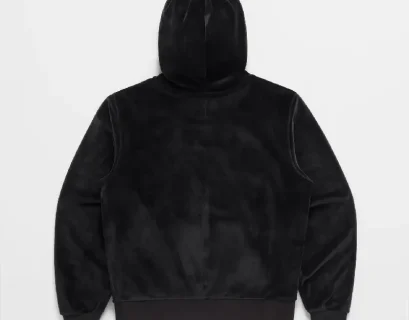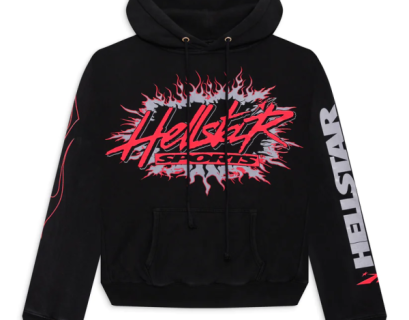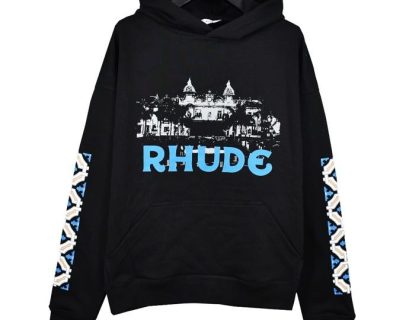Introduction
Fashion has always been more than just clothing—it’s a form of identity, self-expression, and cultural dialogue. Over the years, many brands have sought to merge style with substance, and Systemic Clothing is a standout in this domain. Known for its thought-provoking designs and a strong commitment to storytelling, Systemic Clothing has carved out a unique space in the world of contemporary streetwear and avant-garde fashion.
This article explores the origins, philosophy, design ethos, and cultural significance of Systemic Clothing, offering insights into why it has become a noteworthy brand in the modern fashion landscape.
Origins of Systemic Clothing
Systemic Clothing was founded with a mission: to bridge the gap between fashion and critical thinking. Emerging in a time when consumers sought more meaningful connections with their clothing, the brand’s founders envisioned a line that would not only be visually captivating but also intellectually engaging.
From its early days, Systemic Clothing stood out by infusing its collections with sociopolitical commentary. The brand’s name itself hints at a focus on systems—whether cultural, economic, or political—that shape human experiences. This foundation set Systemic apart from competitors, attracting a loyal following of individuals who appreciated fashion with a message.
The Philosophy Behind Systemic Clothing
Systemic Clothing operates at the intersection of art and activism. The brand’s philosophy is rooted in the idea that clothing can serve as a canvas for exploring systemic issues such as inequality, identity, and sustainability.
- Cultural Commentary
Many of the brand’s collections draw inspiration from historical and contemporary societal themes. Whether addressing racial disparities, economic imbalances, or environmental degradation, Systemic Clothing invites wearers to reflect on their place within these structures. - Empowerment Through Design
The brand seeks to empower its audience by fostering awareness. Each piece often comes with subtle or overt messages, ranging from abstract prints to text-based designs that encourage discourse. - Sustainability Focus
Acknowledging the systemic problems of the fashion industry itself, such as waste and unethical labor practices, Systemic Clothing emphasizes eco-friendly materials and transparent manufacturing processes. This dual commitment to sustainability and storytelling enhances the brand’s appeal.
Design Aesthetics: A Bold and Thoughtful Approach
At the heart of Systemic Clothing lies its distinctive design ethos. The brand is known for blending minimalist cuts with maximalist messages, creating pieces that stand out for both their simplicity and depth.
- Use of Typography
Systemic Clothing frequently incorporates bold typography into its designs, often featuring provocative phrases or poetic snippets that challenge conventional thinking. These text-based designs create an immediate connection with the viewer, prompting questions or sparking conversations. - Color Palette and Material Choices
The brand’s color palette ranges from muted, earthy tones to striking monochromes. This versatility reflects its aim to cater to diverse audiences. Materials are often chosen not just for their aesthetic appeal but also for their sustainability credentials, such as organic cotton or recycled polyester. - Unisex and Inclusive Fits
Systemic Clothing embraces inclusivity by offering unisex designs and an extensive range of sizes. This commitment aligns with the brand’s broader message of breaking down barriers and challenging societal norms.
Cultural and Global Impact
Systemic Clothing’s influence extends far beyond its garments. The brand has become a cultural force, resonating with activists, artists, and fashion enthusiasts worldwide. Its designs often become conversation starters, and its collections have been featured in art galleries and fashion shows alike.
- Collaboration with Artists and Activists
A significant aspect of the brand’s identity is its collaboration with creators who share its vision. From graffiti artists to spoken-word poets, Systemic Clothing leverages these partnerships to bring its messages to life in multidimensional ways. - Social Media Presence
Leveraging platforms like Instagram and TikTok, the brand has cultivated a robust online community. Its posts often feature not just products but also educational content, such as historical context for certain designs or calls to action for social justice movements. - Youth Appeal
By addressing topics that resonate with younger generations—such as climate change, mental health, and identity politics—Systemic Clothing has become particularly popular among millennials and Gen Z.
Challenges in the Fashion Industry
- Balancing Activism and Commerce
The brand must navigate the fine line between meaningful activism and the commercialization of social issues. Critics have occasionally questioned whether the commodification of systemic struggles undermines their gravity. - Sustainability Hurdles
While committed to eco-friendly practices, Systemic Clothing, like many other brands, contends with the limitations of sustainable fashion. These include higher production costs and the complexities of sourcing truly ethical materials. - Competition in a Crowded Market
With many brands now adopting activist messaging, Systemic Clothing must continually innovate to differentiate itself while maintaining its authenticity.
The Future of Systemic Clothing
Looking ahead, Systemic Clothing shows no signs of slowing down. The brand plans to expand its reach through global collaborations and by exploring new mediums, such as digital fashion in the metaverse. Additionally, Systemic aims to deepen its commitment to sustainability, with goals to transition to 100% circular production by the end of the decade.
Moreover, as conversations around systemic issues evolve, the brand is poised to remain a relevant and inspiring voice in both the fashion and activist communities.
Conclusion
Systemic Clothing represents more than just a fashion label—it’s a movement. By blending striking designs with meaningful messages, the brand challenges its audience to think critically about the world around them. Its commitment to sustainability, inclusivity, and cultural dialogue has made it a standout in the modern fashion landscape.
For those who believe that clothing should be a reflection of both personal style and global awareness, Systemic Clothing offers a powerful and inspiring choice. In an industry often criticized for superficiality, this brand reminds us that fashion can, indeed, make a difference.













